
Begonia is a genus of perennial flowering plants in the family Begoniaceae. The genus contains more than 2,000 different plant species. The Begonias are native to moist subtropical and tropical climates. Some species are commonly grown indoors as ornamental houseplants in cooler climates. In cooler climates some species are cultivated outside in summertime for their bright colorful flowers, which have sepals but no petals.

Mutatá is a municipality in the Colombian department of Antioquia.
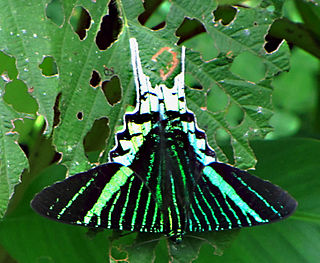
The Uraniinae or uraniine moths are a subfamily of moths in the family Uraniidae. It contains seven genera that occur in the tropics of the world.
The Synecdemus or Synekdemos is a geographic text, attributed to Hierocles, which contains a table of administrative divisions of the Byzantine Empire and lists of their cities. The work is dated to the reign of Justinian but prior to 535, as it divides the 912 listed cities in the Empire among 64 Eparchies. The Synecdemus, along with the work of Stephanus of Byzantium were the principal sources of Constantine VII's work on the Themes.

Orsotriaena medus is a butterfly found in south Asia, southeast Asia, and Australia. It is the only species in the genus Orsotriaena, first described by Hans Daniel Johan Wallengren in 1858.

Urabá Antioquia is a subregion in the Colombian Department of Antioquia that consists of two enclaves, one forming the northwest corner of the department the other, the west, both are along the Atrato River and are separated by the El Carmen del Darién and Riosucio municipalities of the Chocó Department with territories in both municipalities in dispute with Chocó. The region is made up by 11 municipalities. Most of this region's northern portion is part of the Colombian Caribbean Region bordering the Caribbean sea.

The Malagasy paradise flycatcher is a species of bird in the family Monarchidae. It is found in Comoros, Madagascar, and Mayotte. Its natural habitats are subtropical or tropical dry forest and subtropical or tropical moist lowland forest.

Eadem mutata resurgo is a Latin phrase that literally translates to "Although changed, I arise the same".
Batillaria mutata is a species of small mudflat saltwater snail, a marine gastropod mollusk in the family Batillariidae, the horn snails.
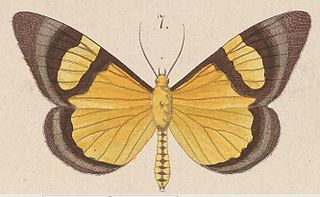
Celerena is a genus of moths in the family Geometridae.

Agrotis vetusta, the old man dart, spotted-legged cutworm or muted dart is a moth of the family Noctuidae. The species was first described by Francis Walker in 1865. It is found in North America, from southern Alaska to Nova Scotia, southward into Mexico.

Desmobathrinae is a subfamily of the moth family Geometridae described by Edward Meyrick in 1886.
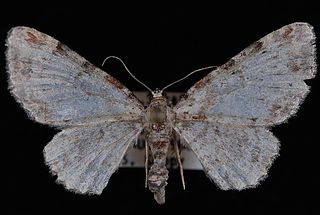
Eupithecia mutata, the spruce cone looper or cloaked pug, is a moth in the family Geometridae. The species was first described by Pearsall in 1908. It is found in the northern Atlantic and New England states in North America. In Canada, the range extends from Nova Scotia to northern Ontario.
Oberea mutata is a species of beetle in the family Cerambycidae. It was described by Francis Polkinghorne Pascoe in 1867. It is known from Sumatra and Borneo.
The Mutatá Fault is a strike-slip fault in the department of Antioquia in northern Colombia. The fault has a total length of 44.7 kilometres (27.8 mi) and runs along an average northwest to southeast strike of 326.4 ± 11 in the Urabá Basin. The fault is active and produced the 2016 Mutatá earthquake with a moment magnitude of 6.0.
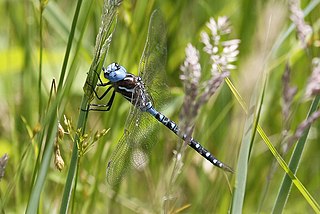
Rhionaeschna mutata, the spatterdock darner, is a species of darner in the dragonfly family Aeshnidae. It is found in North America.
Stegopterna mutata, the mutated black fly, is a species of black flies.
Anarta mutata, or the mutant, is a species of cutworm or dart moth in the family Noctuidae.
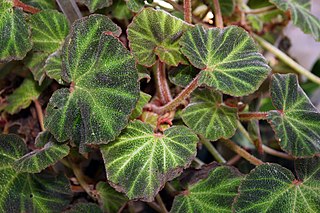
Begonia solimutata, the sun-changing begonia, is a species of flowering plant in the family Begoniaceae, native to Pará state in northern Brazil. It has gained the Royal Horticultural Society's Award of Garden Merit.













